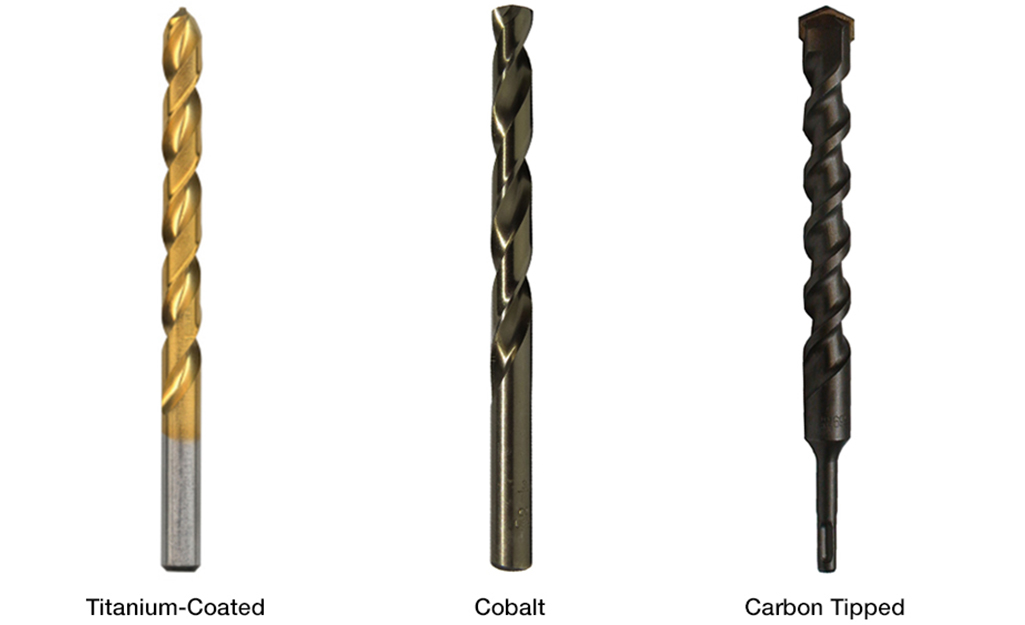

Manufacturers will coat their bits with special additives to improve performance, extend product life and make a worker’s job easier. Often, it’s not sufficient to build drill bits from certain metals alone. Solid carbide bits work well on nonferrous metals, and they do a great job on abrasive surfaces such as fiberglass. This means the entire bit has carbide construction, not just the tip.

What really separates the different bits is their actual metal composition. With few exceptions, metal bits are the most practical choice for every surface including wood, concrete, tile, glass and metal surfaces, as well. There are also different materials used to make the types of drill bits used for concrete, brick or tile.Īlmost all drill bits are made of metal. The types of drill bits for wood have different material composition than the types of drill bits for metal. It’s critical to use the right bit material designed and intended for the project material you are working. Typical point angles are 90° for fast cutting, 118° for general drilling and 135° for slower boring into hard materials.Īs with drill shapes, there are many different drill bit materials. This takes into account terms like screw point, conventional point and split point, but the most important feature is the drill point angle. There are many configurations to drill points. Point: This is the business end of your drill bit.Flutes and leads are mostly relevant to twist drill bits, which are far and wide the most common bit you’ll ever use. Leads are the outer face that governs the hole’s diameter and ensures the bit stays on a true path. Flute and lead: Flutes are the recessed or inner groove portion of the bit’s forward section or cutting part.Typically, shank length is less than the flute and lead portion. Shanks can be smooth or hex-shaped depending on how much torque you need. It’s the part that your electric drill or hand-brace grips. Shank: A drill bit’s shank is the receding end that fits into the drill chuck.You may also find drill bit diameters represented in metric units, with bits typically starting at 3 millimeters. Standard drill bits range from 1/16 of an inch up to 1 1/2 inches. Simply put, it’s the width of the hole the bit can cut. Diameter: Probably the most known bit term is its diameter.Longer shaft bits include augers used for timber boring and extension bits used for getting into recessed spots.

Typical short-shaft bits are low-penetration tools like Forster bits used for recessing work. You’ll find drill bits categorized by how long they are, which determines the depth they’re able to penetrate. Overall length: This is a straightforward description of a drill bit’s physical length.Here are the most important parts of a drill bit’s anatomy: There many terms associated with drill bits, and they all have a significant meaning. One of the big variances in bits is their physical shape or geometry. Many factors affect the difference in drill bits. Likewise, the drill bit to use for brick won't work well on metal. The best drill bits for wood are not the same as the best types of bits for concrete. Not all drill bits are created equal, and there is no such thing as a universal or one-size-fits-all drill bit. Q-Deck Hangers For Roofing and Concrete.Shop Construction Air Compressors Online.


 0 kommentar(er)
0 kommentar(er)
